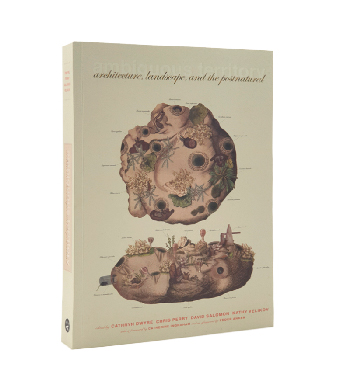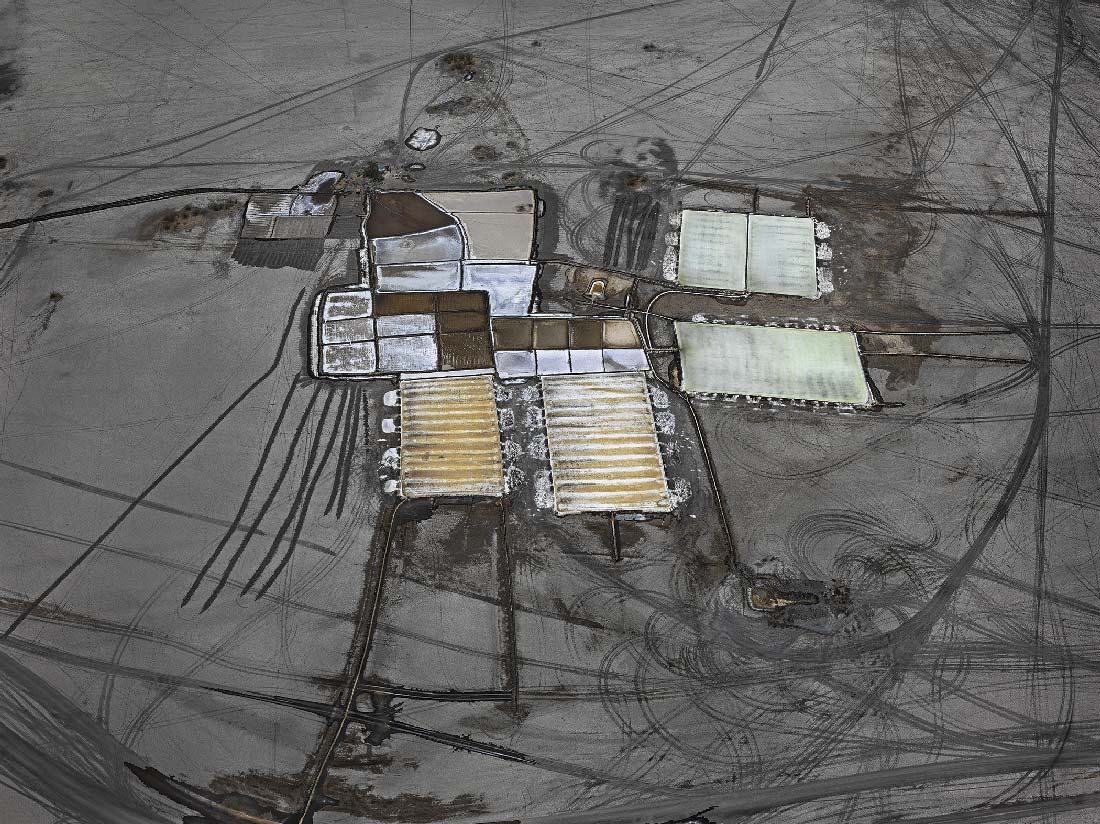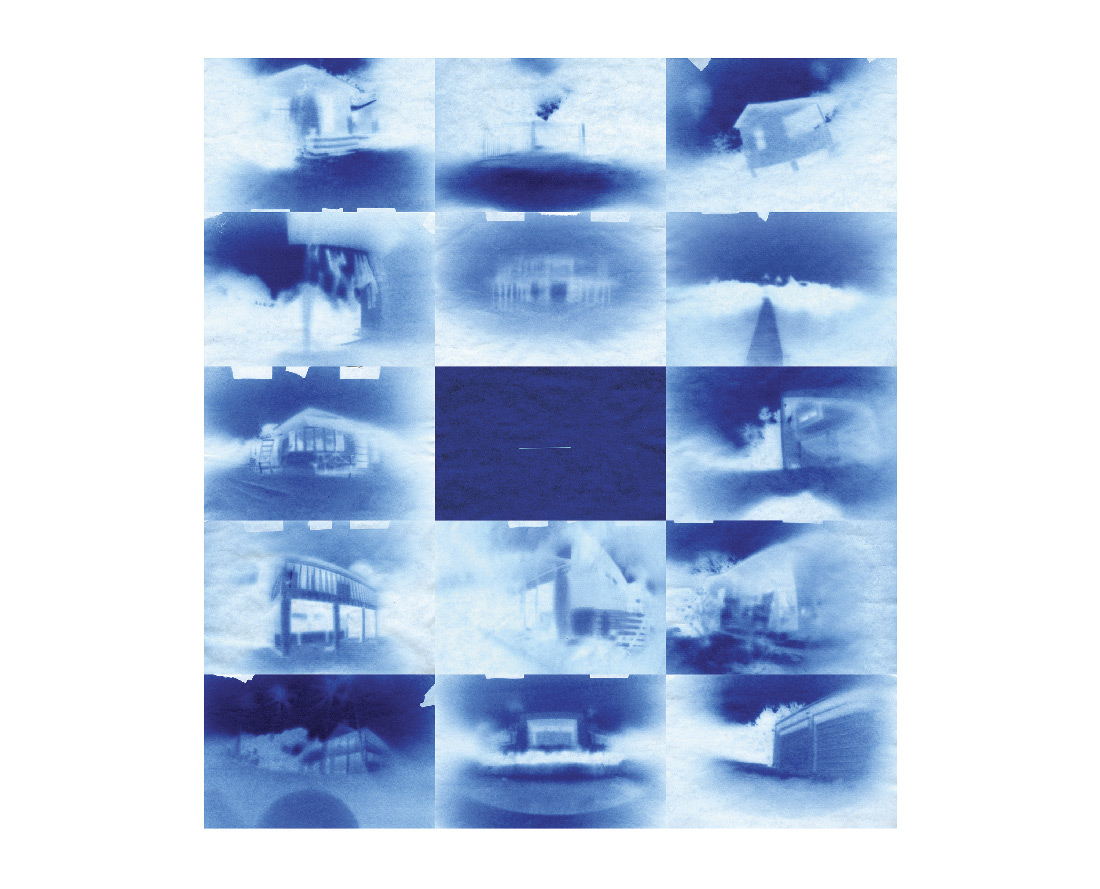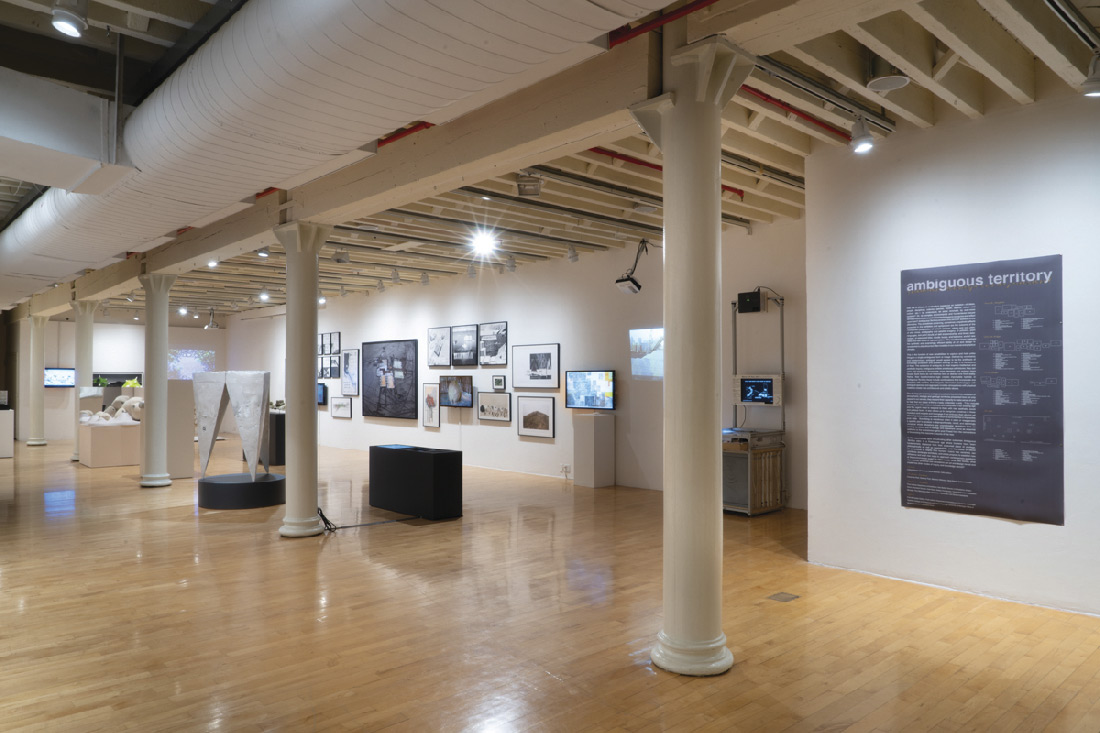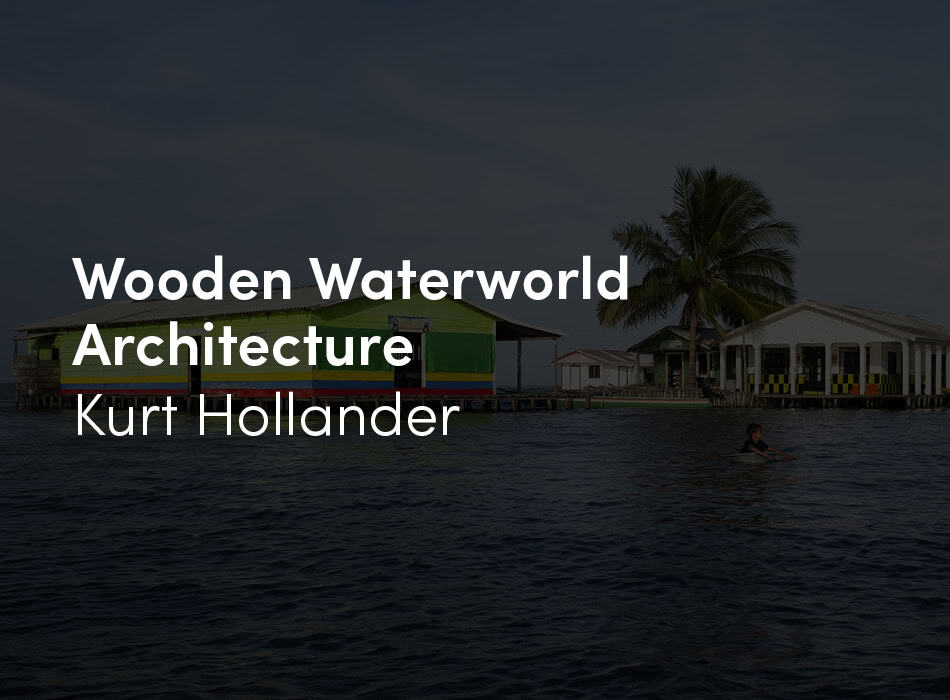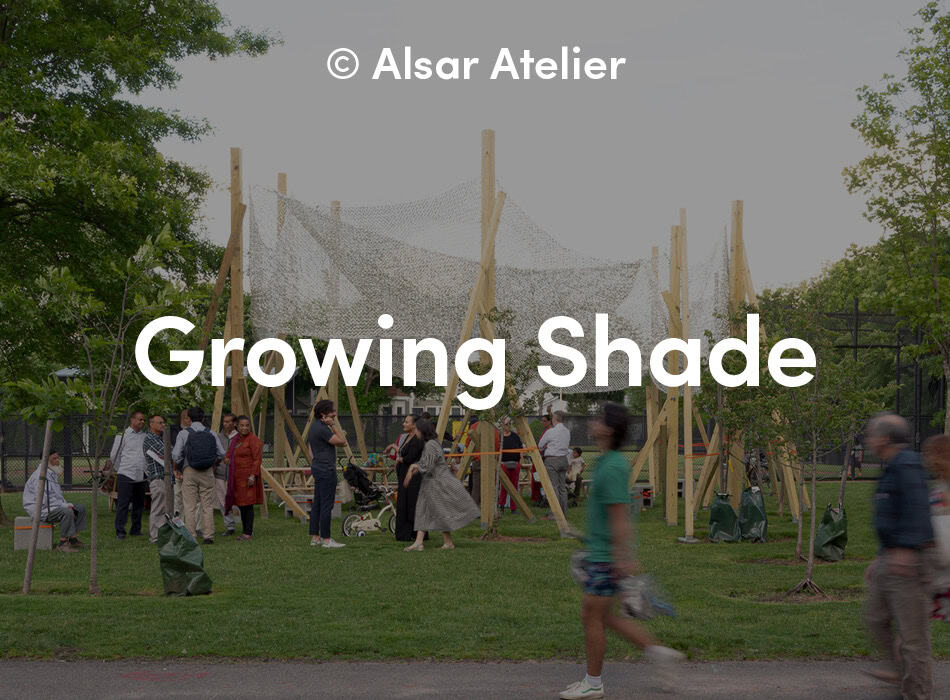Certainty is the anomalous condition for humanity, not uncertainty.
—Mike Hulme, Geographer and Climate Historian
Salt Pan #16, Little Rann of Kutch, Gujarat, India, Edward Burtynsky, 2016.
On Ambiguity and the Postnatural
In ordinary speech “ambiguity” refers to the quality of being open to more than one interpretation, an inexactness, a purposeful uncertainty of meaning for words, ideas, and images.[1] In contrast to vagueness—which relates to lack of clarity—ambiguity is what enables something to support multiple meanings at once. At a time when old dualities—including nature/ culture, animal/human, art/technology, biotic/synthetic—are dissolving, ambiguity’s ability to hold multiple, sometimes contradictory ideas together simultaneously makes it a productive mode of critical intellectual and aesthetic inquiry, and a fertile source of novel relations and knowledge.
In a similar vein to Georges Bataille’s concept of informe, ambiguity resists the imposition of authority precisely through its indeterminacy, thereby remaining open-ended and characterized by potential.[2] Resonant with Bataille’s critique of political power implicit in his rejection of monumental form, political scientist William Connolly argues that in order for democratic politics in modern society to thrive, it requires an appreciation of the ambiguous character of its central standards and principles.[3] An aversion to ambiguity is what characterizes societies of control, the social politics of discipline and normalization of the self, and the logics of separation.[4] In contrast, an ambiguous state is more fluid, more open, more inclusive.
It is within this context that Ambiguous Territory should be understood as a project engaged in purposeful uncertainty. It does this in at least two areas. The first is the ambiguous territory of what is often called the postnatural, a concept that haunts contemporary nature-culture relations. Rather than being the end of nature, the postnatural is better understood as the integration or extension of the natural into the artificial, the technological, the human, and the global.[5] The second is the ambiguous territory of inter- as well as trans-disciplinary[6] practice that seeks to challenge conventional distinctions between art and design, architecture and landscape architecture, and a variety of other disciplinary divisions. Similar to Rosalind Krauss’s conception of a practice of “negativity,”[7] which seeks to understand an ambiguous work as much by what it is as by what it is not, Ambiguous Territory is interested in work that is concerned as much with what is known as with what is unknown. In this framing, Ambiguous Territory relates to a multitude of arenas. Some are physical, such as the literal matter of the world. Others are metaphysical and encompass new ways of perceiving, knowing, and thinking about the world. All are connected to human and nonhuman forms of labor, especially hybrid aesthetic practices that seek to engage the world in new ways.
Perhaps nothing is more ambiguous than the word nature. Linguist Raymond Williams famously writes that “Nature is perhaps the most complex word in the language.”[8] As geographer and environmental historian Clarence J. Glacken notes, the word nature has held many meanings across different languages throughout the history of Western culture, at times associated with the physical or natural environment, at times more philosophical in orientation, and at times related to divinity.[9] He also observes that the inherent ambiguity of the nature-culture relationship is as old as human inhabitation of the planet and originates with two fundamental questions that complicate any easy reconciliation of either a dichotomous or synthetic condition: How has Earth’s physical environment shaped human culture over time? And in what manner has human culture, in turn, reshaped Earth?[10] As Glacken points out, it would seem axiomatic that humans are part of nature since, after all, the human body is a biological organism that interacts with the physical environment on increasingly larger scales. And yet, human progress through the development of art, science, technology, and logic has endowed us with the capacity to alter the physical environment, sometimes quite rapidly, thus operating apart from it as well. Thus, it would seem that humans are by definition ambiguous creatures, at once belonging to and estranged from the world.
Beginning in the eighteenth century with artist, architect, and landscape architect William Kent’s discovery that “all nature (is) a garden,” and stretching into the environmental awakening of the 1960s with the publication of Rachel Carson’s Silent Spring and the passing of the Wilderness Act, we have witnessed a gradual erosion of any simplistic nature-culture duality. Gone too is the notion of a total synthesis that seeks to resolve difference altogether.[11] This shift was helped by a change in sensibility. Landscape architect Ian McHarg notes that Kent’s leap over the garden wall “did not occur until a new view of nature dispelled the old and a new aesthetic was developed consonant with the enlarged arena,” one that could visualize and thus represent this new perspective.[12] In the eighteenth century this new aesthetic was the picturesque.[13] Unlike the geometric world of Enlightenment ideals, the picturesque rendered ambiguous any boundary between artificial and natural, thereby reinforcing a more paradoxical understanding of the nature-culture relationship: one that is neither dichotomous nor synthetic, but rather suspended between the two. While designed by humans, picturesque gardens and landscapes draw from nature itself, including the irregularity and sudden variation consistent with wildness, as described in detail by Uvedale Price in his treatise, Essays on The Picturesque, As Compared with The Sublime and The Beautiful.[14] The picturesque holds the capacity for looser design frameworks, meaning that control itself is distributed, contested, and contingent on changing conditions over time. These ideas were so influential as to inform a new way of thinking about the organization of things other than landscape, including cities and political systems. One example of this is the development of parliamentary democracy in eighteenth century England that introduced a distributed form of power in stark contrast with the rigid hierarchies of monarchical rule that preceded it.[15] In this way then, and returning to Glacken, the picturesque can be seen to represent a historical instance when an idea about landscape holds the potential to shift “the attitudes men should have not only to their surroundings but to themselves.”[16]
Over two hundred years later we are sitting at another of these new world junctions, where the recognition of the Anthropocene[17] epoch compels us to make philosophical as well as aesthetic sense of a now exponentially enlarged arena: one in which new ideas and sensibilities are needed to shift attitudes about the landscape, the environment, and our agency in them. As literary critic Lawrence Buell reminds us, the “environmental crisis involves a crisis of the imagination, the amelioration of which depends on finding better ways of imaging nature and humanity’s relationship to it.”[18] In an age of anthropogenic climate change,[19] such imaging entails a recognition that we are so far beyond nature-culture dichotomies that we have superseded the dialectic to an as of yet unknown third condition.[20] The evidence at this point is impossible to ignore: a pile-on of coastal flooding, mega-droughts, wildfires, mass migrations and extinctions, and the ongoing collapse of systems that we associate with the natural as well as cultural world.
More recently, the human impact on the planet, as well as human frailty that is a direct result of such impact, has been brought into especially high relief during the Covid-19 pandemic, exposing the reality that, as philosopher and cultural theorist Steven Shaviro writes, “the fate of humanity is deeply intertwined with the fates of all sorts of other entities,” with the implication being that “we cannot continue to consider ourselves unique.”[21] As historian Peder Anker notes in his Afterword for this volume, scientists have found microplastics in trout in even the most faraway mountains of Norway, and pollutants in the air of the Antarctic.[22] Hence, the idea that nature is something out there and away from us—and in turn, that we exist outside of nature—is no longer tenable. As a result, nature, or the nonhuman environment, can no longer be perceived “as a framing device but as a presence that begins to suggest that human history is implicated in natural history.”[23] “Nature,” as Donna Haraway puts it, is a co-creation, “a kind of relationship, an achievement among many actors, not all of them human, not all of them organic, not all of them technological.”[24]
Given this fuzzy state, the term postnatural is central to this volume and the work contained herein, as it is a concept that suggests a way of thinking about the physical environment after the historical nature-culture dichotomy that presumed nature was something outside of culture, and vice versa.[25] While there may be some clarity regarding the worldview we’ve left behind, it may not yet be clear what new perspective has taken its place. It is within this fundamental uncertainty that Ambiguous Territory situates itself, and it does so in a purposefully unstable way. Perhaps what distinguishes our contemporary moment from others historically, and what may be most novel about it—thereby inviting new aesthetics, ways of thinking about and imaging the world we now inhabit—is the existential threat related to the nature-culture entanglement that anthropogenic climate change represents. The environment, and what we used to call nature, has become increasingly unpredictable, at times volatile, and as we’ve begun to realize, asking for more flexible humans and nonhumans alike.
Cyanotype print of Conveyance, smudge studio, 2016.
Aesthetic Thinking
Taking neither a naively optimistic nor a cynically fatalistic position aboutart and design’s place in a time of such existential danger, the work featured in this volume explores a wide range of challenges as well asopportunities for creative practice to question if not reinvent our relationship to the world. The works collected here are signals and evidence of a conceptual shift in our attitudes, to our physical environment, and to ourselves. They can be ultimately understood as strategies for converting the threats posed by anthropogenic climate change into what geographer and climate historian Mike Hulme calls an “imaginative resource.”[26] As Hulme argues in his book, Why We Disagree About Climate Change, practicing creative adaptation, as opposed to the defensive posture of preservation and restoration, generates new potential by embracing change rather than resisting it: “Far from being able to eliminate uncertainty, science—especially climate change science— is most useful to society when it finds good ways of recognizing, managing and communicating uncertainty.”[27] By embracing uncertainty as a means of producing new ways of being in the world, creative adaptation promotes “dehabituation,” whereby we see the world anew through a shift in orientation and perspective.28 Philosopher David Wood argues that creative practices such as art, architecture, and landscape architecture hold the potential to enable such dehabituation:
To the extent that art deploys framing (as a painting, as a particular installation, as a sculpture or building), it cannot help in some way putting into play the whole question of the relation between the things we humans shape, create, and focus on, on the one hand, and the outside (nature, background, ‘away’) from which we separate it.[29]
The practices of framing and reframing, as related to a process of dehabituation, rely on what we might call “aesthetic thinking,” whereby our understanding of the world is intertwined with our perception of it.[30] As Wood argues, hybrid forms of knowledge production that incorporate aesthetic perception with cognitive reasoning define an approach to creative practice that “models for us possibilities of ordering, and hence re-ordering, the world, allowing us to imagine wholly other shapes of life, ways of dwelling, moving, and being,” precisely through our sensory experience of it.[31] Such hybrid forms of aesthetic thinking are consistent with John Dewey’s philosophy of aesthetics and his concept of art as experience. In contrast to Immanuel Kant’s argument that “pure reason” and “aesthetic judgment” should be understood as two separate and distinct human faculties, Dewey conceives of aesthetic judgment as a synthetic process that “incorporates both emotional and cognitive components.”[32] As Tyson-Lord Gray, whose research focuses on environmental ethics, writes “[whereas Kant] understood all aesthetic judgments to be wholly subjective, meaning they were determined and validated by the subject,” as distinct from the judgment of reason, which relies solely on cognition, Dewey “presents aesthetic judgments not as lying within the domain of emotions alone but as being a holistic encounter with an object…integrating perception and contemplation in aesthetic judgments.”[33] In effect, aesthetic thinking holds the potential not only for us to perceive the world differently, but also—through synthesis of perception and cognition—to think the world differently as well.
It is the process of thinking the world differently that is essential to any form of creative adaptation we might undertake in response to our changing circumstances. As author Ursula K. Le Guin argues, “we need the language of both science and poetry” in order to “renew our awareness” and “relearn our being in” and “belonging to the world.”[34] And in a similar vein, we follow author J.G. Ballard’s proto-climate fiction novel The Drowned World to ask: in this dangerous new landscape,“what old categories of thought would merely be an encumbrance” and need to be shed, and what new categories of thought do we need to cultivate to survive, let alone thrive?[35]
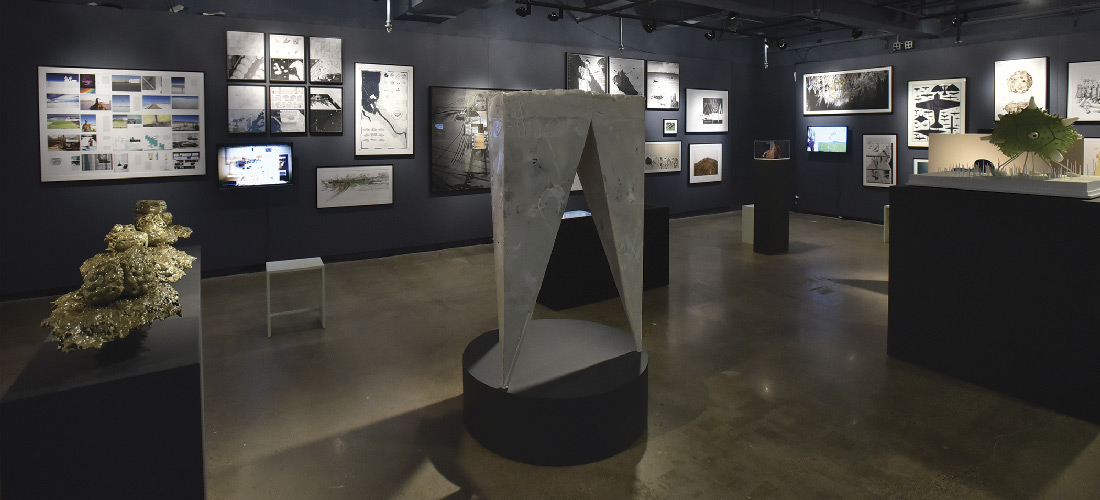 Installation photograph of Ambiguous Territory: Architecture, Landscape, and the Postnatural at the Taubman College Gallery, University of Michigan, 2017. Photo credit: Peter Smith.
Installation photograph of Ambiguous Territory: Architecture, Landscape, and the Postnatural at the Taubman College Gallery, University of Michigan, 2017. Photo credit: Peter Smith.
Environmental Aesthetics
Through the collection of works and essays, the Ambiguous Territory project asks what aesthetic dispositions and practices might be of use to artists and designers in order to perceive and by extension, think and be in the world differently. If “environmental reinterpretation requires us to rethink our assumptions about the nature of representation,” how do we re-present the world as a means of re-engaging it anew?[36] If the existential threat to our survival in an age of climate change is inherent to our contemporary experience—and thus an essential part of understanding nature-culture relations in the twenty-first century—then new forms consonant with the exponentially enlarged arena of our time might include the ecological uncanny, the toxic grotesque, and the toxic sublime, the latter of which incorporates aspects of the natural and the technological sublime.[37]
The ecological uncanny is a recent riff on the uncanny, situating the effects of anthropogenic climate change within the context of the historical aesthetic condition. Examples include author Jeff VanderMeer’s Southern Reach Trilogy, a twenty-first century iteration of “weird” fiction, in the tradition of H.P. Lovecraft, that explores “transitional environments” as sites of “transformation and transmutation” between the natural and the un-natural.[38] Such weirding of ecology, the etymology of which has its origin in the Greek oikos, or house, suggests a weirding of the world itself as a planetary home to humans and nonhumans alike. As cultural theorist Taylor Eggan writes:
If landscape functions as a kind of ‘worlding’ figure that consolidates a human dwelling place, then the ecological uncanny actively, even violently unworlds the home gathered by landscape—it has the character of what Heidegger calls a certain ‘de-worlding’ of the world.[39]
Environmental historian Jennifer Peeples conceives of the toxic sublime as a means of analyzing the work of landscape photographer Edward Burtynsky who captures with powerful effect the radically transformed landscapes of the Anthropocene epoch. Peeples writes that “the horror of the toxic sublime calls into question the personal, social and environmental ethics that allows…places of contamination to exist.”[40] In her essay included in this volume, Peeples explores what she terms the toxic grotesque, as exemplified in the satellite imagery of visual artist Mishka Henner, which reveals landscapes altered by “dark, liquid-centered, open sores that are ringed in a bloody red, or others, a bilious green;” landscapes that suggest that the “earth itself has become infected.”[41] Indeed, the toxic grotesque, as a twenty-first century iteration of the historical category of the grotesque, and one that exchanges the human body for the environmental body as a site of transgression, undermines any reassurance “of containment, of boundaries, of closure, of certainty, of normalcy.”[42] Similarly, philosopher Julia Kristeva’s concept of abjection confronts the inherent ambiguity of corporeal borders as a means of disturbing conventional systems of identity, order, and meaning, oftentimes in ways that are unsettling.[43] Thus, one might consider the implications of an abject aesthetic in relation to the corporeal borders of the physical environment.
Contemporary photography such as that of Burtynsky and Henner exemplify creative practices that engage the aesthetics of a changing world as a means of perceiving and thus thinking differently about that world. Their capacity to image the human patterning of landscape from an Archimedean point has been revolutionary to perspective, and consequently, awareness. In this sense, artistic practices can be seen to function as “cultural barometers” that convert the crisis of anthropogenic climate change into an imaginative resource through aesthetic thinking.[44] Indeed, and as Hulme argues, “[t]he idea of climate exists as much in the human mind and in the matrices of cultural practices as it exists as an independent and objective physical category.”[45] Hence, the value of the work collected in this volume rests not in the ability to find technical solutions to the problem of climate change. Rather—if science has given definition to global warming and the fields of engineering seek to propose solutions—we argue that it is the task of creative practices such as art, architecture, and landscape architecture to help visualize its transformative effects and develop new sensibilities, and ultimately, new forms of engagement with a world estranged from itself.
As Buell argues, while “the creative and critical arts may seem remote from the arenas of scientific investigation and public policy,” they are clearly “exercising…an influence upon the emerging culture of environmental concern, just as they have played a part in shaping as well as merely expressing every other aspect of human culture.”[46] Such influence can be seen in the research practice smudge studio, whose work is included in this volume and whose principals, Jamie Kruze and Elizabeth Ellsworth, state:
The act of cultivating psychological, physical, and spiritual capacities for co-existing with big and fast change in the Anthropocene are as vital as any infrastructural, scientific, and preparatory or adaptive actions. They generate new sensations and meanings—potentials that open the future to new actions and arrangements— even as the future seems to be closing down.[47]
Installation photograph of Ambiguous Territory: Architecture, Landscape, and the Postnatural, Pratt Manhattan Gallery, New York, 2018-19. Photo credit: Pratt Manhattan Gallery / Jason Mandella Photography.
Curating as Thinking
Ambiguous Territory: Architecture, Landscape, and the Postnatural is a traveling exhibition conceived, curated, and designed by Cathryn Dwyre, Chris Perry, David Salomon, and Kathy Velikov that aims to explore this potential of converting the effects of anthropogenic climate change into an imaginative resource for creative practice through the process of aesthetic thinking. The exhibition opened in 2017 at the Taubman College of Architecture and Urban Planning at the University of Michigan, alongside an eponymous symposium, whose resulting essays are also included in this volume. The exhibition subsequently traveled to the University of Virginia’s School of Architecture Elmaleh Gallery in 2018, the Pratt Manhattan Gallery in New York in 2018, and the Handwerker Gallery at Ithaca College in 2019, each with related events.
Writing and curating as a group of four individuals—with a grounding in both architecture and landscape architecture, as well as expertise in art, design, and scholarship—required the articulation of a kind of collection net amongst us, one that was large and intricate, intimate, eccentric, and sometimes even blunt. As a group, the climate crisis obviously motivated us, as did received forms of autonomy in art and design that seek to separate fields of knowledge and creativity. We searched for experimental works that probe a potentially explosive relationship between humans and alternative concepts of nature through diverse works of art and design that simultaneously interrogate disciplinary limits. Whilst articulating our approach, we resisted typical taxonomies, and at the same time responded to the taxonomic as a device.[48] Here lies a kernel of the (ambiguous) working method. We engaged in a search for works that relate by way of “effective affinities” or shared sensibilities, which in turn produce a new attunement between the technological and the natural.[49] We looked for work that eludes dualisms of all kinds, work in which there is “no fundamental, ontological separation in our formal knowledge of machine and organism, of technical and organic.”[50]
In terms of our approach to the format and design of the exhibition, which in turn informs the organization of this volume, the working method of effective affinities led us to revisiting the social and cultural salon that flourished in Europe during the seventeenth and eighteenth centuries. On the one hand, the salon of that era is fitting, both as an emblem of an age in which extreme wealth inequity began to threaten global systems, and the time in which the steam engine was invented, eventually giving rise to industrialization, global trade, and the metropolis in the eighteenth century. In different ways, each of these developments can be viewed as the unwitting catalyst for the climate crisis we face in the twenty-first century. On the other hand, we were also interested in the salon as a historical space of discourse and creative practice, which the exhibition itself aspires to, as well as its unique display format. Characterized by loose physical groupings or clusters of artworks, a salon approach to display engenders the ambiguity of multiple readings and interpretations through multiple affiliations and associations. In other words, the display format of a salon is already an informal landscape of experimentations, inventions, and ideas.
The exhibition is organized into three sections of relationalities to the ground: the Atmospheric, the Biologic, and the Geologic.[51] While these sections were conceived partly in literal terms, in that each refers to a portion of the Earth currently under transformation due to anthropogenic climate change, they also function figuratively, in terms of the material, formal, spatial, temporal, and in some cases, aural sensibilities of creative work. It is work that seeks to make sense of a world newly estranged from itself. In this way the exhibition’s physical terrain is itself a territory that upends traditional nature-culture boundaries, as well as disciplinary distinctions, with sometimes unnerving, sometimes empathetic affects that result from the unexpected juxtaposition of such things as remote sensors, robots and rock piles; strip mines, stratigraphy and satellite imagery; pollution, plant languages, and point clouds; manual draftsmanship and computer-generated datascapes; networked kites, clouds, buoys, and balloons; and radical ideas, sensibilities, and modes of representation.





